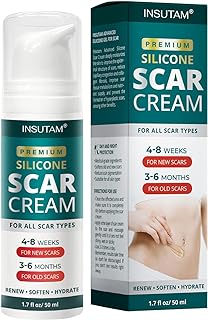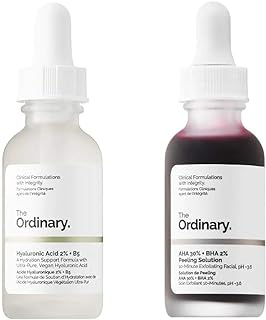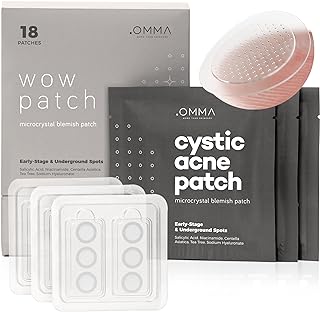5 important factors worth considering when looking for the best chemical peel
Chemical peels are a popular choice for improving skin texture, reducing fine lines, and achieving a glowing complexion. With so many options available, it’s important to consider some key factors before choosing a product. By looking beyond advertising and personal stories, people can better understand what they need for their skin and make a smart decision.
See our guide to the best chemical peel.
Skin type
Knowing your skin type is essential when deciding to get a chemical peel. Different skin types react differently to different peel ingredients, so it’s important to use the right peel for your skin. If you have sensitive skin, a gentler peel with ingredients like lactic acid or fruit enzymes might be better to avoid irritation. On the other hand, if you have oily or acne-prone skin, a peel with salicylic acid could help unclog pores and control oil. Dry skin types may benefit from peels with hydrating ingredients like hyaluronic acid or glycolic acid to add moisture and improve texture.
For combination skin types, it’s best to choose a peel that can address both oily and dry areas at the same time. By picking the right chemical peel for your skin type, you can get great results while reducing the risk of negative reactions. Talking to a skincare professional can help you pick the best peel for your skin concerns without harming its health. Ultimately, making informed choices about chemical peels based on your skin’s unique needs can lead to a more personalized and effective skincare routine.
Strength/acidity of the peel
When choosing a chemical peel, it’s important to consider the strength and acidity of the peel. These factors affect how well the peel works, any side effects, and the overall results. A peel with lower acidity might seem safer, but it may not show as much improvement. On the other hand, a peel with higher acidity can give more noticeable results, but there’s a higher chance of negative reactions. Finding the right balance between strength and acidity is key to getting the results you want while avoiding issues. It’s best to talk to a skincare expert to figure out the right peel strength and acidity for your skin.
Understanding how deep the peel will go is also important to know what to expect from the treatment. A superficial peel works on the top layers of skin, giving a gentle exfoliation and a subtle refresh. In contrast, a medium or deep peel goes deeper and can target more serious skin issues like wrinkles and acne scars. While stronger peels can have great results, they also need more recovery time and have more risks. It’s crucial to think about the pros and cons when picking the strength and acidity of your peel. With the right knowledge and realistic expectations, you can confidently choose a chemical peel and get glowing, refreshed skin.
Ingredients
Choosing the right chemical peel for your skincare routine is crucial. Be sure to carefully check the ingredients list. Natural ingredients like AHAs from fruits or BHAs like salicylic acid can gently exfoliate your skin and make it look smoother and more radiant. It’s also helpful to look for ingredients like aloe vera or chamomile to soothe any irritation that the peel may cause.
On the other hand, be cautious of chemical peels with harsh chemicals like parabens, sulfates, and artificial fragrances. These can harm your skin by removing its natural oils and causing inflammation. Choosing peels with clean and natural ingredients can protect your skin and is better for the environment. Remember, the effectiveness of a chemical peel depends on the quality of its ingredients, so choose wisely for healthy and glowing skin.
Potential side effects
Before you decide to get a chemical peel, it’s important to think about the possible side effects that could happen. While chemical peels can make your skin look better by reducing imperfections, it’s also important to know that there are risks involved. These risks include redness, irritation, sensitivity, and even scarring. It’s a good idea to talk to a skincare professional before getting a chemical peel so they can determine what strength of peel would be best for your skin to avoid bad reactions.
After you get a chemical peel, how your skin reacts can be different based on your skin type and the type of peel used. Some people may peel more than others, feel more discomfort, or need more time to recover. It’s important to think about the risks compared to the benefits before deciding to get a chemical peel. While these side effects are usually temporary and can be managed with proper care, it’s still important to do your research and understand what to expect before having a chemical peel. Remember, making informed decisions will help make your cosmetic experience safer and more satisfying.
Post-treatment care
After getting a chemical peel, people often forget about taking care of their skin properly because they are so excited about having beautiful, glowing skin. But not taking care of your skin after a chemical peel can really affect how well it works and how good your skin looks in the end. It’s important to spend time and energy on helping your skin heal properly. This can make a big difference in how long the results last and can help prevent any bad reactions.
Following the instructions for skincare products and staying out of the sun are both crucial steps in making sure the treatment is successful. It might be hard to wait to go back to your normal skincare routine, but being patient is really important when it comes to taking care of your skin after a chemical peel.
Additionally, taking care of your skin after the peel is over can make the results even better and help your skin recover more smoothly. Putting in the effort to pamper and protect your skin can improve how your skin looks, making you appear younger and less affected by things like pollution. This whole approach to skincare shows that you care about yourself and helps you build a routine that keeps your skin healthy in the long run. So, remember that looking after your skin after a chemical peel is just as important, if not more so, as the peel itself in getting that flawless skin you want.
Conclusion
In the world of skincare, chemical peels are known for their ability to improve the appearance of the skin. They can address various skin issues effectively and help boost self-esteem. Getting a chemical peel is about more than just improving your skin – it’s a way to show yourself love and confidence. By choosing to get a chemical peel, you’re embarking on a journey of self-care and empowerment, revealing a glowing and healthy complexion that reflects your inner beauty and value. Want more info on bed sore pillow for butt, check the best bed sore pillow for butt.



